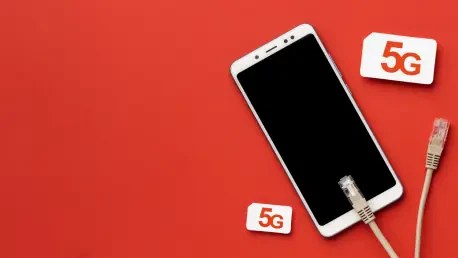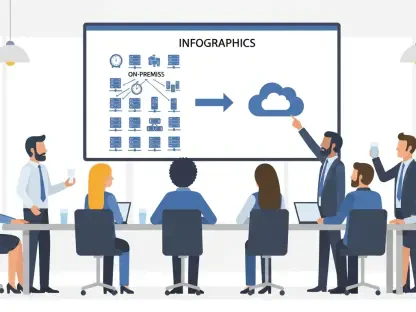As the telecommunications landscape continues to evolve at a rapid pace, a significant shift is unfolding with Rogers’ decision to shut down its 3G network this year, sending ripples through the industry, particularly for mobile virtual network operators (MVNOs) that depend on Rogers’ infrastructure in Canada. This move, aimed at paving the way for more advanced technologies like 4G and 5G, poses unique challenges for MVNO customers who may be using older devices or phones not equipped for newer network standards such as Voice over LTE (VoLTE). The implications are far-reaching, affecting not just direct Rogers subscribers but also those tied to smaller providers like SpeakOut Wireless, Good2Go Wireless, and Red Wireless. With compatibility issues looming large, many users face the risk of losing essential services like calls and data access. This development raises critical questions about preparedness, adaptation, and the broader push toward modernization in the mobile sector, setting the stage for a deeper exploration of its impact.
Challenges for MVNOs and Their Subscribers
The shutdown of Rogers’ 3G network marks a pivotal moment for MVNOs that lease access to its cell towers, creating a cascade of technical and logistical hurdles for both providers and their customers. Many subscribers, especially those with older devices or phones purchased outside Canada, may find their equipment incompatible with VoLTE, a necessity for maintaining service on newer networks. Without this capability, users will be unable to make calls or access mobile data, effectively rendering their devices obsolete on Rogers’ infrastructure. MVNOs such as SpeakOut Wireless and Good2Go Wireless, both under Ztar Wireless, are grappling with this transition, compounded by ongoing disputes with Rogers over network access terms. This tension adds uncertainty to how smoothly customers can adapt, with some potentially facing service disruptions if solutions aren’t found quickly. The situation underscores a broader issue of technological disparity, where not all users are equipped to keep pace with rapid network advancements, leaving providers in a precarious position to manage expectations and support.
Beyond the technical barriers, financial implications loom large for MVNO subscribers caught in the crosshairs of the 3G shutdown. For instance, customers of prepaid services like SpeakOut Wireless risk losing unused balances if they fail to transition to a compatible device or carrier before service cessation. This is particularly concerning for budget-conscious users who rely on these affordable plans and may not have the means to upgrade their phones immediately. Additionally, MVNOs like Red Wireless, which caters to retired Canadians, face the challenge of ensuring their demographic—often less tech-savvy—understands the need for device upgrades or carrier switches. The lack of clarity around transitions, such as Ztar Wireless exploring a move to Bell’s network, further complicates matters, as users await definitive guidance. This scenario highlights the urgent need for clear communication and support from MVNOs to prevent customer frustration and potential loss of trust during this critical shift in the mobile landscape.
Navigating Device Compatibility and Carrier Options
One of the most pressing concerns for MVNO customers affected by the 3G shutdown is ensuring device compatibility with modern network standards like VoLTE. Many users with phones older than four or five years, or devices not purchased through Canadian retailers, may find their hardware unsupported on Rogers’ updated infrastructure. The solution often involves upgrading to a newer device, which, while effective, can be a significant expense for those on tight budgets. For those unable to upgrade immediately, the risk of losing connectivity is real, impacting everything from emergency calls to daily communication needs. This issue is not unique to Rogers’ network, as other carriers like Telus are also phasing out 3G by the end of this year, affecting MVNOs tied to their systems, such as Public Mobile. The industry-wide push toward modernization leaves little room for legacy technology, placing the burden on consumers to adapt quickly to avoid being left behind in an increasingly digital world.
For MVNO customers seeking alternatives, exploring other carriers with affordable plans offers a potential lifeline amid the 3G shutdown challenges. Options like Chatr, a budget-friendly service on Rogers’ network, provide a viable choice for those who wish to stay within the same ecosystem, provided their devices support VoLTE. Meanwhile, carriers such as Freedom Mobile present lower-cost plans, though they too are impacted by similar network transitions. Switching providers, however, is not always straightforward, as it may involve navigating new terms, potential coverage differences, and the hassle of transferring numbers or services. For users facing financial constraints, the cost of a new device or plan remains a barrier, even with budget options available. This situation emphasizes the importance of MVNOs and carriers alike offering robust support, including detailed guidance on compatible devices and transparent information about plan transitions, to ease the burden on subscribers during this transformative period.
Reflecting on Industry Shifts and Next Steps
Looking back, the decision by Rogers to discontinue its 3G network stood as a defining moment that compelled both MVNOs and their customers to confront the realities of technological evolution. This transition exposed vulnerabilities among users with outdated devices and highlighted the complexities of carrier disputes, as seen with providers like SpeakOut and Good2Go Wireless. Moving forward, affected subscribers were encouraged to take proactive measures, such as verifying device compatibility with VoLTE and exploring budget-friendly alternatives like Chatr or Freedom Mobile. MVNOs, on their part, needed to prioritize clear communication and support to guide users through upgrades or carrier switches. Additionally, industry stakeholders were urged to consider initiatives that could mitigate financial burdens, such as subsidized device programs for low-income users. As the mobile sector continued to advance, ensuring no one was left disconnected became a critical focus, shaping a more inclusive approach to network modernization.









